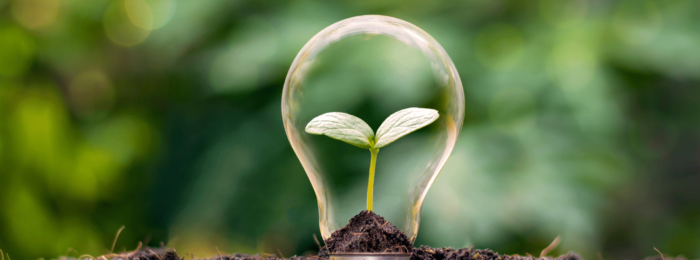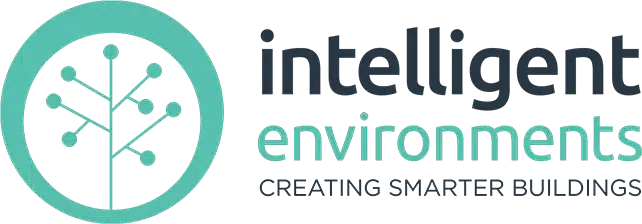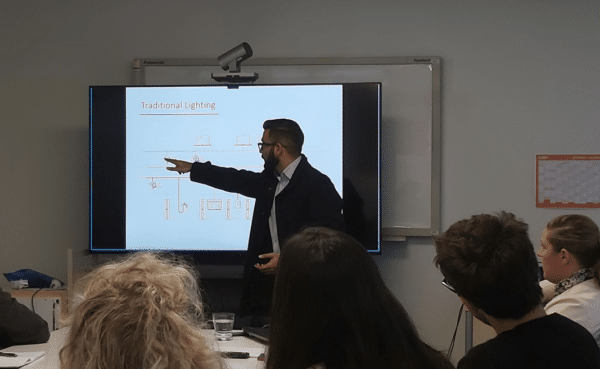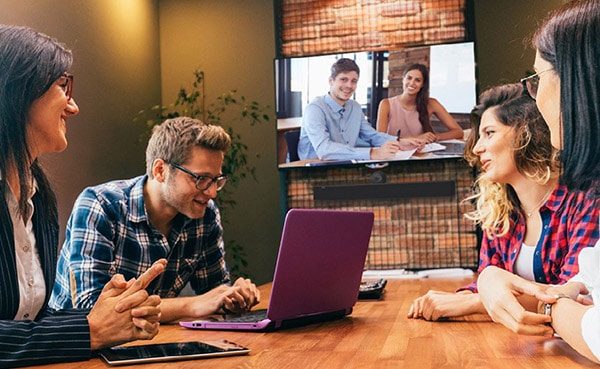Our company focuses on using innovative smart lighting technology to revolutionise new and existing buildings into smarter, more efficient, and healthier environments.
When Intelligent Environments was born, 16 years ago, the goal for most customers utilising our services, was simply to reduce their energy bills.
Today, it is so much more!
Sustainable lighting solutions not only make good sense fiscally but are a visual representation of your company’s commitment to sustainability goals.


How A Sustainable Lighting Solution Will Help Achieve Your Sustainability Goals
Sustainability and other “green” topics such as the “Circular Economy” are constantly in the news.
There has been a significant shift in attitudes with individuals and companies alike expressing a genuine desire to make a positive impact. This green revolution encompasses end clients, contractors, and manufacturers, all striving to be part of the movement. While it is widely understood that resources are depleting, the financial advantages of adopting sustainable practices are becoming increasingly apparent from a business/financial standpoint.
It makes sense for companies to take advantage of opportunities to extend the lifespan of their lighting systems, and take steps to reduce energy consumption, whilst maintaining a focus on the health and well-being of the built environment. Choosing a sustainable lighting solution will ensure this happens.
Intelligent Environment’s role today reflects those changing needs of both the environment and our clients, and we now view our purpose as to create smarter buildings that enhance well-being and efficiency through a sustainable approach.
Green Legislation
Legislation is also playing a vital role in supporting this change by providing a framework for sustainable practices and validating claims made by less scrupulous organizations.
However, understanding green legislation can be complex, leading to the rise of specialist companies that assist in ensuring compliance.
This positive trend, however, often results in a lack of understanding about the true impact of lighting. Lighting not only saves energy but also serves as a visual indicator of a company’s commitment to energy conservation. For instance, an office building brightly lit late at night when unoccupied sends a strong and negative message to staff, customers, and the public. Conversely, dimming or turning off lights conveys a clear dedication to addressing energy conservation.
Many countries are adopting or at least exploring further legislation in areas such as Life Cycle Analysis (LCA) and Product Environmental Footprints (PEF), often referred to as Environmental Product Declarations (EPD).
These declarations are essential for both products and services, providing complex and comprehensive information on their environmental impact. However, creating EPDs can be a costly and time-consuming process, particularly for companies with extensive product portfolios. Lighting, being a ubiquitous product with numerous variants and suppliers, requires a better approach to evaluating data to ensure the selection of environmentally friendly products that align with the original design intent.
Embodied Carbon
The concept of Embodied Carbon adds an additional intriguing layer of complexity. This metric measures the amount of carbon emitted during the construction of a building or product. As with EPDs, understanding the origin of raw materials and manufacturing processes greatly affects the final embodied carbon figure.
It is important however to consider the relevance of this figure. For instance, a low-cost electronic device with few components and a short lifespan may have a lower embodied carbon value compared to a more sophisticated device that consumes less energy and lasts four times as long.
Relying solely on “numbers” can be confusing and doesn’t always result in the best decision being made. This is certainly the case in the lighting industry, where manufacturers source components from various vendors, resulting in significant variations in embodied carbon values.
Product Circularity
Circularity is another critical aspect to address. Many products are not designed with future reuse or remanufacturing in mind, rendering them non-replaceable or unable to be repurposed due to material degradation.
Futureproofing must also be considered. If the needs of the building or its occupants change, can the technology be re-used, expanded upon, and secured against any future threats from hackers, etc.
When it comes to lighting, new builds have the advantage of budgeting for lighting design and the latest controls technology.
The lighting control standard AS/NZS 62386 (currently the ONLY lighting control standard) adopted the DALI standards in their entirety. To be compliant, a lighting control system should be DALI, but may have either a wired infrastructure (DALI-2), be wireless (DALI+) or be a hybrid system (mixture of wired and wireless). For a new building, where a 230V cabling infrastructure is to be installed anyway, it is common for DALI cabling to be installed at the same time. It is easy to do, as the DALI cables do not require segregation from the mains cabling as is usually necessary with proprietary bus systems.
Refurbishments must consider existing infrastructure, sometimes making it impractical or impossible to shut down an entire building for lighting renovations. Refurbishments often focus on specific areas or perhaps an entire floor of a building, rather than the whole structure. This is where wireless controls, such as those based on the open wireless standard DALI IEC 62386 Part 104, have become a game changer. Interoperability between manufacturers is ensured, and refurbishments can be done area by area, reducing the strain on infrastructure. Using an international standard like IEC 62386 Part 104 Thread for wireless mesh systems offers security advantages compared to proprietary solutions. It provides security of supply for future expansion and essential maintenance.
Net Zero
To achieve Net Zero goals, it is imperative for New Zealand to update existing building stocks and upgrade lighting systems. Reusing existing buildings and infrastructure is a sensible approach, but the choice of controls for a sustainable lighting solution can significantly impact the system’s long-term adaptability.
Whether wired or wireless, selecting the right solution is essential. The DALI Alliance has collaborated to develop a solution that undergoes third-party testing to ensure its hardware functions as intended. This removes guesswork and ensures compliance, extending the lifespan of control projects beyond that of many other systems.
The definition of an efficient product is generally agreed upon, with the understanding that the most efficient luminaire is one that can be switched off or dimmed to optimize daylight harvesting.
However, evaluating the efficiency of a sustainable lighting control system can be challenging, as the true value lies in the energy saved over time. This highlights the importance of implementing systems that not only measure products or buildings but allow the monitoring and continuous fine-tuning of their operation to suit specific needs and maximise savings.
Remote Working
The COVID-19 pandemic has significantly altered work dynamics, with remote working becoming the new norm for many individuals.
From an environmental standpoint, this shift makes sense, as it eliminates the need to operate large buildings beyond requirements and reduces the environmental impact of commuting.
Consequently, it is all the more important that lighting management systems report on usage, energy consumption, maintenance, safety, and sustainability as a continuous process, as building occupation may vary from day to day.
An additional “green” benefit of the zencontrol system that we propose, is that the ability to make adds/moves/changes remotely, means site visits are not required. Fewer cars on the road, travelling from site to site.
Additionally, vulnerable sites such as hospitals and aged care facilities, can be managed remotely. This proved of significant benefit during the pandemic when visits from contractors were certainly not wanted. Even compliance for emergency lighting systems can be managed remotely.
Achieving Sustainability Goals
Smart, sustainable lighting control solutions like zencontrol have revolutionised the visualisation and management of data, enabling companies to effectively monitor and optimise their lighting systems in line with sustainability goals.


